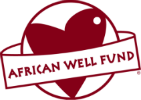To celebrate a million dollars raised, we’re taking the opportunity to
look back at the projects which your donations have made possible. To begin, a project AWF undertook in Uganda in 2006.
Once called “The Pearl of Africa” by Winston Churchill for its
magnificent landscapes, Uganda has seen its share of changes over its
long history. Since independence, it has at times been subject to
immense upheaval, from the regimes of Amin and Obote to the terror
wrought by Joseph Kony and the LRA throughout its northern regions.
Contemporary Uganda has made great strides over the last 25 years. It
has had the single-most-effective response of any African country to the
HIV crisis, bringing infection rates from 30 percent in the 1980s to
6.4 percent in 2008. Poverty has been reduced from 56 percent of the
population in 1992 to 31 percent in 2005. And while the price of coffee
(Uganda’s biggest export) has dropped dramatically, the country still
posted 7 percent growth in 2008, despite the global recession.
Despite these great strides, many in Uganda, particularly in rural
Uganda, home to approximately 85 percent of the population, still lack
access to clean, safe drinking water. Women and children are
particularly affected. While over 90 percent of rural women work in
agriculture, they’re also largely responsible for all domestic tasks,
leading to average workdays of 15 hours or more. Having to walk many
kilometers for water not only adds to the time each woman must spend
working in a day, but also reduces the amount of time she has to
participate in other small-scale economic activities such as breeding
and raising livestock.
With this project, the African Well Fund and partner Africare sought to
construct and reinstall 15 water wells to serve community members in the
Ntungamo District.
Africare has enjoyed great success in the Ntungamo District before,
increasing water access in some sub-counties from as little as 14
percent to 75 percent. These new wells were designed to join 31 other
water sources already created with funding from AWF that serve 12,400
community members, some of which were toured by AWF board members in 2006.
Building new water sources is done in close partnership with the
communities served. These communities provide the land required for
projects, as well as labor and whatever materials are provided locally.
In addition, they house and feed project masons. Africare supplies
skilled masons and supervisors, as well as sourcing materials not
available locally.
Once funds were raised, Africare was able to mobilize local communities, securing volunteers to start excavation of the wells.
Once their well was not functional, children depended on
gulley water. The water was shared with animals and when it rained, the
contaminated run-off was washed into the gulley.
Africare water mason and Jacob, a Peace Corps Volunteer hosted by
Africare, to install a pump. In the process, they learn how to repair
minor faults.
As the wells are constructed, community members are trained in proper
sanitation techniques. In addition, Water User Groups, comprised of four
women, four men and a supervisor, are established and tasked with the
upkeep and operation of each waterpoint. Each Water User Group is
equipped to keep the well operational. Further, small income-generating
activities such as fish farms and vegetable gardens are established at
the wells, allowing communities to supplement the income of
well-keepers.
The 15 new water points were completed in 2007 and are serving 6,000 community members in the Ntungamo District.
To learn more about this project, read the complete reports here.





